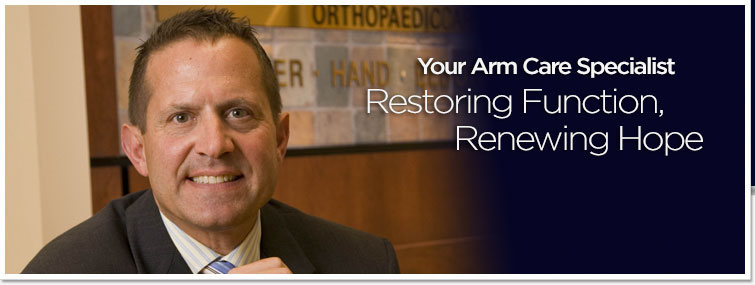NOTICE:
Our Practice has MOVED
Our new location is:
Suite 405
1815 South Clinton Ave
Rochester, NY, 14618.
The NEW phone number is 585-565-3500
Our Practice has MOVED
Our new location is:
Suite 405
1815 South Clinton Ave
Rochester, NY, 14618.
The NEW phone number is 585-565-3500

For appointments call
585.565.3500
Fax Number:
585.434.4081
585.565.3500
Fax Number:
585.434.4081

Improving the Management of Rotator cuff disease
November 30th, 2013
Rotator cuff disease ranks among the most prevalent of musculoskeletal disorders-- the prevalence of rotator cuff tears may exceed 50 percent in individuals older than age 65. Because the my focus on the arm requires that I keep abreast of the most current research regarding the management of rotator cuff problems, I want you to be informed about a 2010 publication by the American Academy of Orthopaedic Surgeons (AAOS), which addresses the "Optimization of Treatment."
If you would like a copy of the full guidelines, and supporting documents please contact me and I will email you a copy. On this website click on CONTACT DR TOMAINO .Further, if you have specific questions about the guidelines, I will be happy to respond to your queries.
Each year, approximately 200,000 Americans require shoulder surgery related to repair of the rotator cuff. An additional 400,000 Americans have surgery for related rotator cuff tendonitis or for partial tears. From a demographic standpoint, the treatment of the painful rotator cuff is an important musculoskeletal problem, which will only increase in importance as the population ages.
The large volume of clinical and research interest published in the Orthopaedic literature in the last decade recognizes the relative importance of rotator cuff disease. These studies have attempted to address a multitude of important questions regarding rotator cuff treatment, including the following issues:
• The timing and role of non-surgical treatment such as steroid injections, physical therapy, or modalities
• The indications for repair of chronic rotator cuff tears and the impact of muscle atrophy
• The surgical indications for acute traumatic tears
• The effect of multiple confounding factors such as age, diabetes, and smoking on surgical prognosis
• The most effective or appropriate surgical strategy for partial thickness tears--débridement versus rotator cuff repair
• The most effective of the many available postoperative rehabilitation protocols
Interestingly, though we, as experienced specialists, may have strong opinions about treatment strategies, the available research finds little consensus among Orthopaedic surgeons on rotator cuff treatment options.
In this context, the American Academy of Orthopaedic Surgeons assembled an evidence-based Clinical Practice Guideline (CPG) work group to identify the most important questions for treatment of the rotator cuff and the best evidence available to assist Orthopaedic surgeons in determining the best standard of care.
In 2010 a guideline and evidence report was published with 14 recommendations optimizing the management of rotator cuff problems. This report addressed nonsurgical treatment, surgical indications, and postoperative treatment, including:
1. Decision-making for asymptomatic patients with full thickness tears
2. Indications for nonsurgical treatment in patients with symptomatic tears
3. The relative role of physical therapy, steroid injections, anti-inflammatories, and other modalities for nonsurgical treatment
4. Indications for rotator cuff repair
5. The role of prognostic factors
6. The best practice, rehabilitation principles
Adjunct surgical issues—such as the use of bone tunnels or suture anchors and the addition of biologics to enhance healing—were also addressed.
Although the work group initially evaluated an extensive body of literature—more than 4,000 articles, they found very few that actually met the AAOS criteria for evidence. As a result, of the multiple recommendations in the guideline, none carry a “strong” grade.
Because the work group broke several of the recommendations into different parts, the final CPG has 31 total recommendations—4 classified with a moderate grade, 6 with a weak grade, and 19 as inconclusive. In addition, two recommendations carry a consensus of expert opinion, made in the absence of any reliable evidence and after considering the known harms and benefits associated with the treatment.
Unfortunately, the absence of evidence was the most important finding of this guideline process. It is certainly consistent with the multiple controversies surrounding rotator cuff disease as well as with the wide variations seen in treatment.
The work group strongly recommends that practitioners not rely solely on the summary, but that treatment decisions for an individual patient depend on that patient’s circumstances and mutual communication between the patient and the treating practitioner.
Replies
No replies!



